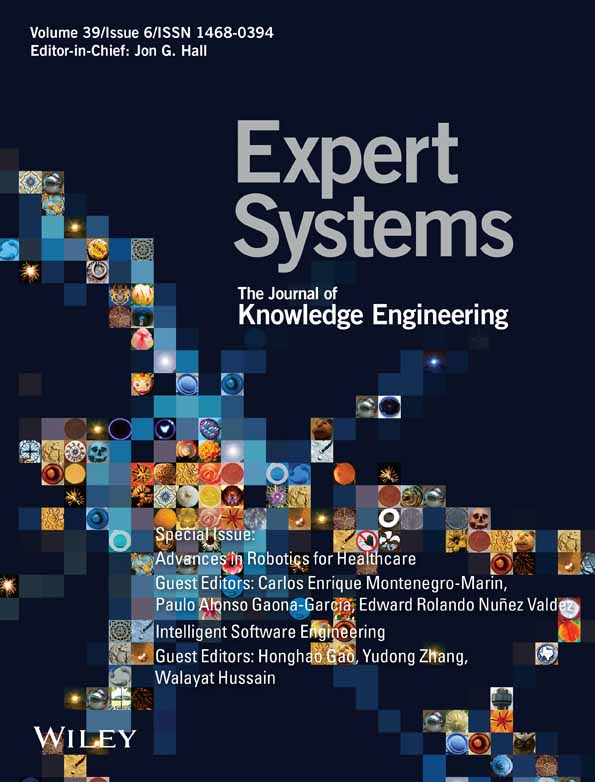Special issue on intelligent software engineering
Intelligent software engineering is an emerging topic that has attracted great attention in both academia and industry. It relies on the synergy between artificial intelligence (AI) and software engineering, improving both software productivity and quality, for example, providing coding suggestions for better productivity or locating defects to avoid poor quality. Intelligent techniques have been used to handle software engineering problems, for example, code generation, code recommendation, bug fixing and bug repair. Especially, AI can be leveraged to enhance software quality efficiently by accelerating manual testing and removing human errors. Moreover, AI can work 24 h a day and 7 days a week without interruption.
This special issue is a platform for discussing challenges, opportunities, novel techniques and applications and includes the six papers outlined below.
The first paper, titled ‘Syntax-based metamorphic relation prediction via the bagging framework’ by Li et al., proposes a multi-dimensional program structure-based metamorphic relation prediction approach, which is composed of feature extraction and prediction model building. In the feature extraction stage, the testing program is converted to multiple intermediate structures to explore its features. In the prediction model building stage, the extracted feature set is used as the training set, and a novel semi-supervised SVM-Bagging-KNN algorithm is designed to train the prediction model. Then, a two-phase hybrid granularity (TPHG) search algorithm is proposed to improve the prediction performance by selecting the optimal number of weak classifiers. Compared to existing approaches, the proposed model can improve the accuracy by around 14%.
The second paper, titled ‘Modelling and analysing the reliability for microservice-based cloud application based on predicate Petri net’ by Liu et al., designs a reliability model of microservice-based the Cloud using predicate Petri nets (PrT nets). Based on the constructed microservice reliability model, the correctness of the PrT net model and the effectiveness of the strategies are proven theoretically. Finally, an example is given, and experiments are carried out to verify the effectiveness and feasibility of the method.
The third paper, titled ‘Optimizing demand-driven null dereference verification via merging branches’ by Cheng et al., proposes a merged null dereference verification (MNDV) approach. MNDV employs a backward, path-sensitive inter-procedural analysis technique to verify a given dereference as safe or potentially unsafe. It uses a branch merging strategy to remove redundant paths, and a method call's relevance to the null references is checked to determine whether it is necessary to explore the internal codes of the method. The approach has been evaluated in benchmark programs. Compared to existing approaches, this approach reduces false alarm rate and effectively reduce the consumption of time and memory.
The fourth paper, titled ‘A multi-tenancy and robust workflow management system’ by Ding, et al., presents a modularized distributed workflow management system to support multi-tenancy with high availability. On the one hand, a multiple-worker-with-separate-schema mechanism is defined to jointly isolate data for tenants with flexible management. On the other hand, a proactive strategy is presented to dispatch concurrent requests from users to engine workers with spare resources. Based on case studies and experiments, the proposed system on modest machines is proved to support tens of thousands of tenants, second-level response time for 10K concurrency, and no-human-intervened failure recovery for a fail-stop system node.
The fifth paper, titled ‘Eliminating the high false-positive rate in defect prediction through BayesNet with adjustable weight’ by Zhao et al., proposes a BayesNet with adjustable weights, called WBN, to reduce the FPR in software defect prediction. It is an algorithm independent of data preprocessing techniques. The WBN is to change the sampling probability of the misclassified instances when training the defect model, making the BayesNet model focus more on false alarm instances. Then, the FPR of five mainstream defect models for solving class imbalance are investigated and selected as comparison models to test the validity of the methods. The experimental results on eight open-source projects showed that the average value of the FPR of WBN decreased by 23.35% and 26.98%, respectively.
The sixth paper, titled ‘IFGAN: Information fusion generative adversarial network for knowledge base completion’ by Zhang et al., proposes information fusion generative adversarial network (IFGAN) to handle heterogeneous data. A bidirectional learning architecture including a graph convolutional neural network and graph attention network to learn contextual embeddings is designed, the embeddings fuse knowledge from a knowledge base and data generated by an application. For efficient negative sampling, different kinds of convolution structures are employed, such as depthwise separable convolution and involution in the generator of the network. The effectiveness of the proposed model was demonstrated on KB4Rec datasets, the evaluation metrics MRR and H@10 were improved compared to previous models.
ACKNOWLEDGEMENTS
We would like to take this opportunity to express our sincere thanks and appreciation to all authors who submitted their papers to this special issue and the peer reviewers for their excellent support.




